In a world where cuteness often reigns supreme, there’s perhaps nothing more universally adored than the sight of a chubby-cheeked baby. Those soft, plump little cheeks invite countless kisses and endless coos, but what lies beneath that irresistibly adorable exterior? Is it merely a matter of genetics, or is there a deeper scientific explanation for this feature that many cultures associate with health and prosperity? In this article, we delve into the fascinating interplay of biology, evolution, and even societal perceptions that contribute to the phenomenon of chubby cheeks in infants. Join us as we explore the science behind the cuteness, revealing how these tiny mounds of softness are not just aesthetically pleasing but also serve important functions in a baby’s development. From the roles of fat storage to the cues of care and nurturing, we uncover the reasons behind one of nature’s simplest yet most endearing gifts.
Understanding the Biological Purpose of Baby Fat
One of the most charming aspects of babies is their adorable chubby cheeks, which serve a significant biological purpose. The extra fat in infants, often adorably referred to as “baby fat,” is not merely a cosmetic feature; it plays a crucial role in their development. This fat acts as a reservoir of energy, essential for growth in the first year of life when their bodies are rapidly developing. Moreover, the insulation provided by this fat is vital for maintaining body temperature, as newborns have underdeveloped thermoregulation systems. Feeding on demand ensures that babies receive the nutrients they require to build and sustain this fat layer.
Additionally, baby fat is important for brain development. Infants are born with a brain that is approximately 25% the size of an adult brain, but it grows rapidly, reaching about 80% by the age of three. This metabolism requires a significant amount of energy, and the stored fat provides a ready source of calories to support optimal brain function. Furthermore, some studies suggest that this baby fat plays a role in the initial immune system development, helping to protect the little ones from infections during their early vulnerable months. Fat also finds its place in a variety of essential bodily functions, such as hormone production, showcasing its multifaceted importance in a baby’s early life.
The Role of Chubby Cheeks in Infant Development
Chubby cheeks are not merely a delightful feature; they play a significant role in an infant’s growth and development. The adorable plumpness is primarily due to subcutaneous fat that provides essential energy reserves during the rapid growth phases seen in infancy. This fat layer helps regulate body temperature and supports the energy demands of a developing brain, which at this stage is growing at an extraordinary rate. Beyond their physical function, these chubby cheeks also contribute to the emotional and social bonding between the baby and caregivers, evoking nurturing instincts and encouraging interaction through their inherent cuteness.
Furthermore, the presence of these lovable features is linked to healthy feeding practices. Breastfeeding and early nutrition play pivotal roles in building this soft facial padding. Research indicates that babies who are adequately nourished are more likely to develop prominent cheeks, setting the foundation for facial muscle development and healthy jaw alignment. This aligns with the following key points regarding the significance of chubby cheeks in infant development:
- Energy Storage: Provides reserves for growth spurts.
- Temperature Regulation: Assists in maintaining body heat.
- Social Interaction: Prompts bonding and emotional connections.
- Feeding Practices: Indicates nutritional health and growth.
Cultural Perceptions of Cuteness and Their Impact
Across various cultures, perceptions of cuteness can significantly influence social interactions and even caregiving behaviors. For instance, traits commonly associated with cuteness—such as chubby cheeks, big eyes, and a small nose—are often deemed universally appealing. These characteristics evoke protective instincts in adults, leading to a behavioral response known as the **baby schema**. Parents and caregivers may find themselves more inclined to nurture and care for infants that display these traits, fostering a bond that can have lasting implications for the child’s emotional development. Social norms and cultural factors can further amplify this response, leading to significant variations in how cuteness is interpreted and celebrated in different societies.
Additionally, the impact of cultural perceptions extends beyond individual families to encompass broader societal views and marketing strategies. Industries targeting parents often emphasize cuteness as a desirable quality in products aimed at children. For example, in advertisements for baby clothes, toys, or even food, companies utilize imagery and language that highlight the **adorable features** of infants. This cultural penchant for cuteness can create a feedback loop, reinforcing the behaviors and traits that are perceived as charming across generations. Here are some factors influencing these perceptions:
- Media Representation: The portrayal of babies in films and advertisements.
- Cultural Traditions: Festivals or rituals celebrating childbirth often focus on the joy of cuteness.
- Social Norms: The societal emphasis on traits associated with health and well-being.
Nurturing Healthy Growth: Tips for Encouraging Baby Wellness
Encouraging wellness during your baby’s early years is vital for their growth and development. One of the most delightful aspects of babyhood is their adorably chubby cheeks, which are a sign of healthy nutrition and adequate weight gain. To promote this delightful aspect of your little one’s development, focus on providing a **nutrient-rich diet** based on their age and developmental stage. This can include:
- Breastfeeding or formula feeding: Essential for initial growth.
- Pureed fruits and vegetables: Introduce a variety around 6 months.
- Healthy fats: Avocados and nut butters can aid in weight gain.
- Regular feedings: Establish a consistent schedule to ensure they are getting enough nourishment.
In addition to a balanced diet, physical affection and bonding are critical for a baby’s emotional and physical wellness. Engaging in practices such as gentle cuddling, singing lullabies, and providing safe tummy time can greatly influence their overall happiness and encourage that adorable roundness. Here are a few more ways to foster a nurturing environment:
- Frequent interaction: Talk to your baby often to strengthen their emotional bonds.
- Playtime: Encourage them to explore their surroundings while supervised.
- Sleep routine: Foster healthy sleep habits to support their growth.
Q&A
Q&A: Why Do Babies Have Chubby Cheeks? The Science Behind the Cuteness
Q1: What is the biological purpose of chubby cheeks in babies?
A1: Babies are born with chubby cheeks primarily as a survival mechanism. Those adorable folds of fat serve as an energy reserve, which is crucial for newborns who have limited feeding abilities and may not consume enough nutrients right away. This extra fat helps ensure that they have enough energy for growth and development, especially in their early months.
Q2: How do chubby cheeks contribute to a baby’s cuteness?
A2: Cuteness in babies is often linked to physical traits that invoke nurturing instincts in adults. Chubby cheeks, round faces, and big eyes create a specific aesthetic that many find irresistibly cute. This combination of features stimulates the release of oxytocin, often referred to as the ”love hormone,” which enhances feelings of affection and care toward the child.
Q3: Do all babies have chubby cheeks, or is it dependent on other factors?
A3: While many babies are born with delightful chubby cheeks, the degree of chubbiness can vary based on factors such as genetics, diet, and overall health. Some babies may have rounder faces due to their genetic background, while others might have leaner features. Additionally, nutrition and feeding habits play a pivotal role in how much baby fat they accumulate during their early growth stages.
Q4: At what age do babies start to lose their chubby cheeks?
A4: Around the age of 1, many babies begin to lose their chubby cheeks as they start to become more active and transition to solid foods. This activity helps burn off some of the stored fat, leading to a gradual slim down. Chubby cheeks often give way to a more defined jawline as they grow, but every child’s development is unique and varies based on their growth patterns.
Q5: Is there a health concern related to overly chubby cheeks in babies?
A5: In general, chubby cheeks are perfectly normal in babies and typically indicate healthy weight gain. However, if there are concerns about a baby’s growth pattern or if they have excessive weight gain beyond the healthy range recommended by pediatricians, it’s essential to consult a healthcare professional. They can assess the baby’s overall health and nutrition to ensure they are developing as they should.
Q6: Can parents do anything to influence their baby’s cheek chubbiness?
A6: While parents cannot directly control the physical features of their baby’s face, they can support healthy growth and development through adequate nutrition, breastfeeding, or formula feeding as recommended by pediatricians. Creating a nurturing environment encourages healthy habits that contribute to an infant’s overall well-being, which can ultimately affect their physical development.
Q7: What other adorable traits do babies develop as they grow, apart from chubby cheeks?
A7: Beyond chubby cheeks, babies often develop many other charming features that elicit joy from parents and caregivers. These include sparkling eyes, heart-melting smiles, and tiny fingers and toes. Their soft skin and the way they react with curiosity to their world also play a vital role in their adorableness, rounding out the complete package of baby cuteness that captivates those around them.
To Conclude
the chubby cheeks of babies are more than just a delightful feature; they are a fascinating amalgamation of biology, evolution, and social bonding. These adorable plump puffs serve crucial roles in ensuring the survival of the infant, providing not only nourishment through breast-feeding but also enhancing the sense of warmth and affection that parents feel. As we marvel at the irresistible charm of chubby cheeks, it’s important to remember that this phenomenon is rooted in our natural instincts and deeply intertwined with the nurturing relationships we build from the very beginning of life. So, the next time you see a baby with those irresistible round cheeks, you can appreciate the wondrous science behind it—an enchanting reminder of the power of evolution and the universal language of cuteness that draws us all closer.


